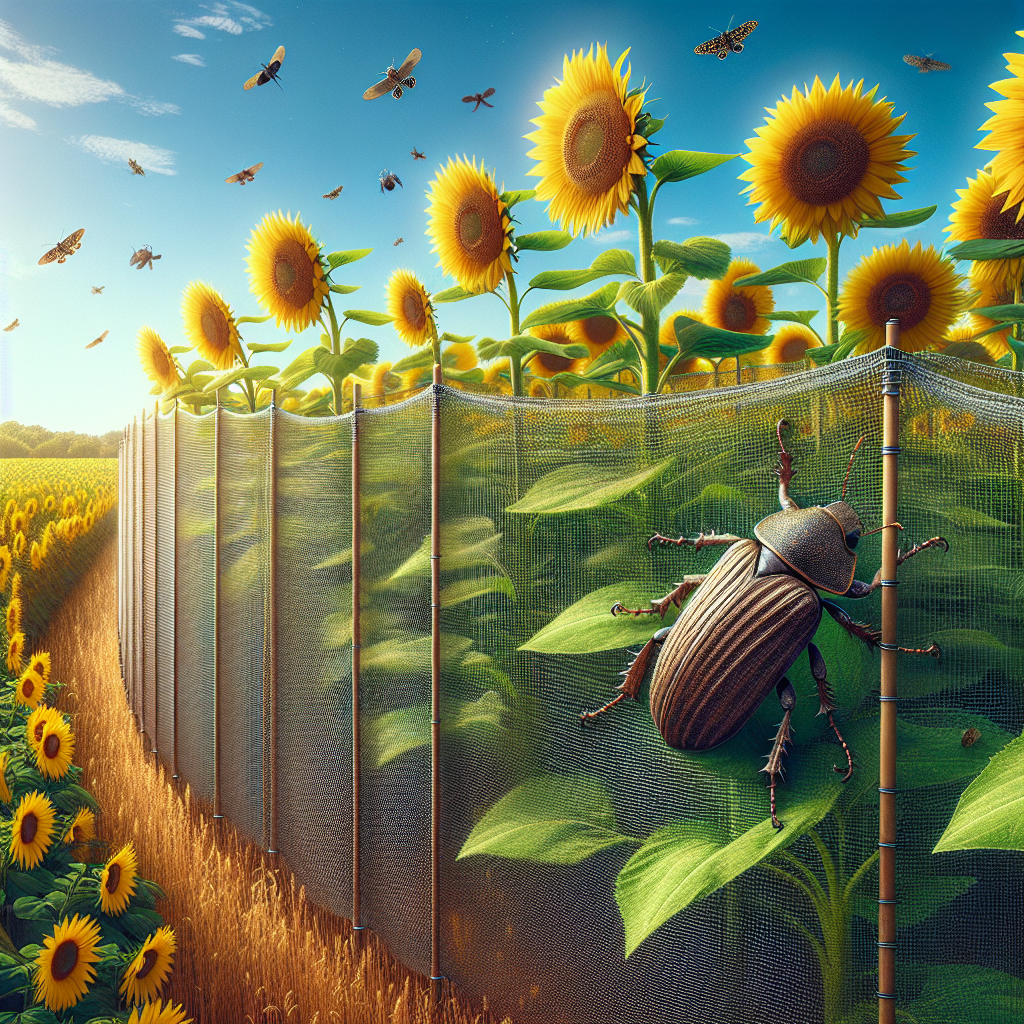Indoor Tips for Caring for a Dahlia Plant
Updated June 18, 2024 at 5:17 pm

Overview of Dahlia Plant Care
-
Pet Friendly:
Dahlias are considered mildly toxic to pets, so it is best to keep them out of reach from your furry friends. If ingested, they can cause mild gastrointestinal symptoms.
Light Requirements:
Dahlias thrive in bright, indirect sunlight. Direct sunlight can scorch the leaves, so if you’re growing dahlias indoors, choose a spot near a window that receives plenty of light but is shielded from the harsh midday sun.
Watering:
Keeping the soil moist but not waterlogged is crucial for dahlias. They prefer a consistent watering schedule, allowing the top inch of soil to dry out between watering sessions.
Humidity:
Dahlias don’t have high humidity requirements, but they appreciate a bit of extra moisture in the air. A regular room humidity level is typically adequate.
Temperature:
Dahlias enjoy moderate temperatures ranging from 60 to 70 degrees Fahrenheit. Avoid placing them near drafts or sources of heat like radiators.
Difficulty:
Caring for dahlias indoors is moderately easy. With proper care and attention to their needs, they can bloom beautifully even when grown inside.
Choosing the Right Soil for Indoor Dahlias
When planting a dahlia indoors, the soil you choose will have a significant impact on its growth and blooming potential. A well-draining potting mix is essential to prevent water from pooling at the bottom of the pot, which can lead to root rot. I have found that the Organic Dahlia Potting Mix by Bloombastic Gardens, with its balanced blend of peat, perlite, and compost, provides the perfect environment for my dahlia plants. According to the reviews, other gardeners have observed that their dahlias have shown vibrant growth and blooms with this mix.
Find This and More on Amazon
Water Wisely: Irrigating Your Dahlia for Optimal Health
Dahlias require a delicate balance when it comes to watering. Too much water can lead to soggy soil and root issues, while too little can stress the plant. A common tip I tell friends is to check the soil before watering—stick your finger about an inch deep; if the soil feels dry, it’s time to water. Additionally, a drip irrigation system, like the EasyDrip Indoor Watering Kit, can automate this process and provide your dahlia with consistent moisture. Reviewers say the system is a game-changer for maintaining the right watering schedule without the hassle.
Find This and More on Amazon
Providing Adequate Light for Your Indoor Dahlia
To mimic the natural environment dahlias love, finding a bright spot in your home where the plant will receive indirect sunlight is essential. If you’re having trouble finding the right spot with enough light, or if winter days are too short, a grow light could be a worthwhile investment. The SunBlaster Micro Grow Light Garden is a compact, tabletop system I’ve read great things about. It’s said that growers find it highly effective for keeping dahlias happy during darker months, encouraging consistent blooming indoors.
Find This and More on Amazon
Fertilizing for Health and Bloom
Feeding your dahlia with the right fertilizer at the right time can boost growth and blooms. A balanced, slow-release fertilizer with an equal ratio of nitrogen, phosphorus, and potassium promotes overall plant health. One such product with positive feedback is the FloraBloom All-Purpose Plant Food. Plants seem to respond well to it, with some reviewers noting visibly more robust and more frequent blooms after its application.
Potting and Repotting Dahlias Indoors
Pot selection is critical when it comes to indoor dahlia care. Dahlias grow best in pots that are large enough to accommodate their root system but not so large that the soil stays wet for extended periods. A good rule thumb is to choose a pot that is about one third larger than the root ball. A pot with adequate drainage is non-negotiable, as dahlias are prone to root rot. Terra-cotta pots are a favorite among indoor gardeners because they are porous, allowing the soil to dry out more evenly. I’ve personally seen a significant difference in the health of dahlias grown in terra-cotta versus those in plastic pots, and many reviewers online concur, echoing the importance of choosing the right pot for dahlia care.
Managing Pests and Diseases in Indoor Dahlias
Indoor dahlias may be less prone to pests and diseases than their outdoor counterparts, but they’re not immune. Aphids, spider mites, and thrips can all pose a threat. An effective way to combat these invaders is with neem oil, a natural pesticide. The product, GreenLeaf Neem Oil Extract, gets high praise for its efficacy against a variety of pests without harming the plant or beneficial insects. People have noticed a decrease in pest activity on their dahlias after applying this oil, making it a go-to for many indoor garden enthusiasts.
Find This and More on Amazon
The Importance of Deadheading and Pruning Indoor Dahlias
Deadheading, or removing spent flowers, not only keeps your dahlia looking attractive but also encourages the plant to produce more blooms. Use a pair of clean, sharp scissors or pruning shears to snip away the dead flowers just above the nearest set of leaves. For pruning, it’s crucial to remove any weak or diseased stems to help the plant maintain good airflow and direct energy to the healthiest parts. The Gardenite Ultra Snip Pruning Shears are highly recommended for precision and ease of use. They have been reported to make clean cuts without damaging the plants, which is vital for the delicate stems of dahlias.
Find This and More on Amazon
Battling Common Problems with Indoor Dahlias
One of the most common issues when growing dahlias indoors is the appearance of yellowing leaves, which can signal a variety of problems. If you notice this occurring, there’s no need to panic. First, assess your watering schedule – both overwatering and underwatering can cause leaves to yellow. Additionally, a nutrient deficiency might be at play. If the yellowing persists, consider a nutrient supplement like the BioAdvanced All-in-One Rose and Flower Care, which nourishes the plant while protecting against pests and diseases. This product has been said to revitalize dahlias suffering from yellowing leaves, breathing new life into their appearance.
Find This and More on Amazon
Propagating Dahlias for More Indoor Beauty
Propagating indoor dahlias can be a rewarding project. It allows you to create new plants from cuttings taken from a healthy mother plant. The best time to take cuttings is in the spring, as the plant comes out of dormancy and begins producing new growth. Use a sharp, clean blade to make a cutting just below a set of leaf nodes, then plant directly into a moist potting mix. A rooting hormone, like the well-reviewed Garden Safe TakeRoot Rooting Hormone, can increase the success rate of your cuttings taking root. Many indoor gardeners hail this hormone as the secret to their propagation success, aiding in quick root development and robust new growth.
Find This and More on Amazon
Caring for Indoor Dahlia Blooms
Indoor dahlias can produce stunning blooms that brighten up any space, but to ensure a spectacular floral display, special care is needed. Flowers should be supported with plant stakes or cages to keep the stalks from breaking under the weight of heavy blooms. A popular choice among gardeners is the Luster Leaf Link-Ups Plant Support, which offers versatile and sturdy support options for dahlias as they grow. Many reviews describe these supports as not only highly functional but also discreet enough not to detract from the beauty of the blossoms.
Find This and More on Amazon
Winter Care for Indoor Dahlias
As dahlias are native to regions with warm climates, winter can be a challenging time for indoor plants. It’s important to reduce watering during the dormant period and to keep the plant in a cool, frost-free place. If you live in a particularly cold area, you might consider providing additional warmth with a heat mat. One such item that gets recommended is the VIVOSUN Durable Waterproof Seedling Heat Mat. This mat gently warms the soil, ensuring that the dahlia’s roots don’t get too cold, which reviewers often state helps their plants survive and even thrive during the colder months.
Find This and More on Amazon
Enjoying Your Indoor Dahlia
After all the care and attention you have given to your indoor dahlia, it’s time to enjoy the fruits of your labor. Dahlias come in a variety of shapes, sizes, and colors, making them a delightful addition to your home décor. Remember that as beautiful as they are, dahlias are not long-lasting cut flowers. For the longest vase life, cut them early in the morning and place immediately in water. Additionally, you can use a flower preservative to extend their freshness. A product like Floralife Crystal Clear Flower Food is often cited in testimonials for keeping cut dahlias vibrant for a longer period, compared to water alone. This extra step can ensure that your impressive blooms can be admired for as long as possible.
Find This and More on Amazon
Final Thoughts on Cultivating Indoor Dahlias
Cultivating dahlias indoors can be a delightful experience, yielding gorgeous blooms and a wonderful sense of accomplishment. It might seem daunting at first, but with patience, the right tools, and a willingness to learn from each plant’s unique needs, indoor dahlias can be a very rewarding addition to your indoor garden. Remember the fundamentals of caring for these vibrant flowers: choose the right soil, water wisely, provide adequate light, deadhead and prune as needed, and safeguard against pests and diseases. Most importantly, don’t forget to enjoy the process and the beautiful blooms it brings. Happy gardening!
Shop more on Amazon

